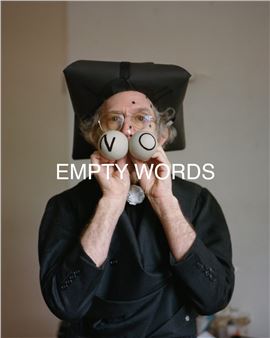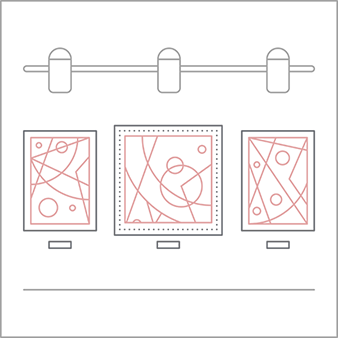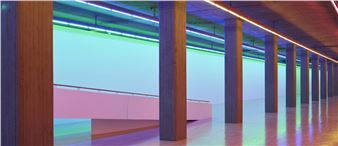Alfons Mucha: Master of Art Nouveau-A Retrospective
As Mucha failed to pass the entry exam for the Prague academy in 1878, the young artist moved to Vienna in 1879 where he worked as a stage set painter until 1881. There he was influenced not only by the magic of the theatre, but also by the fashionable art of Vienna's most famous painter of the day, Hans Makart (1840–1884), as illustrated in this show by a newly discovered large format decorative work by Makart. After a two-year stay in Munich (1885–1887), Mucha moved to Paris in 1889, where he eventually gained world-wide fame with his poster designs, especially those featuring the actress Sarah Bernhardt (1844–1923).Â
Among the show's highlights is the reconstruction of the Bosnia-Herzegovina pavilion for the Paris World's Fair (1900), as well as the presentation of two monumental paintings from the multi-part "Slav Epic" (1910-1926). These programmatic works in Mucha's oeuvre have so far received too little attention. Yet, especially his contributions to various pavilions at the Paris Universal Exhibition are some of his most important achievements. After he failed to execute his own plans for a "Pavilion of Mankind", Mucha was given the opportunity to contribute monumental wall decorations for the Bosnia-Herzegovina pavilion.Â
On canvases covering more than 250 square meters, he rendered the history of these former Ottoman Empire provinces, which became Austro-Hungarian territory following the 1878 Berlin congress. Most of these mural paintings have survived, and now for the first time, they are being reassembled as they were shown in the central hall of the Bosnia-Herzegovina pavilion. Even though Paris was still the world's artistic centre around 1900, Mucha decided to leave France and return to his native country, but not before paying several visits to the United States. Apart from the fact that his fame had somewhat waned in Paris, Mucha's return home was mostly instigated by a commission from the city of Prague to decorate the Lord Mayor's Hall in the Municipal House "ObecnĂ Dum" (1912). The exhibition also features painted designs for this decorative program.Â
Mucha had long desired creating monumental works that would treat the history of his own country, as well as some larger themes of mankind. The financial support from the American benefactor Charles R. Crane (1858-1939) enabled him to realize a painted cycle consisting of 20 enormous canvasses depicting Slavic history: the so-called "Slav Epic" (1910–1926). Conceived as a gift to the city of Prague, the works are currently still kept in a castle in MoravskĂ˝ Krumlov, not far from Vienna. The Munich exhibition includes two of these large canvases, as well as many sketches and preparatory works for the cycle. Not only do these monumental pictures show a new development in Mucha's artistry, they also form a synthesis of all his previous creations and manifest his ideas of the Slavic peoples' role in a European context.Â

Recommended for you
As Mucha failed to pass the entry exam for the Prague academy in 1878, the young artist moved to Vienna in 1879 where he worked as a stage set painter until 1881. There he was influenced not only by the magic of the theatre, but also by the fashionable art of Vienna's most famous painter of the day, Hans Makart (1840–1884), as illustrated in this show by a newly discovered large format decorative work by Makart. After a two-year stay in Munich (1885–1887), Mucha moved to Paris in 1889, where he eventually gained world-wide fame with his poster designs, especially those featuring the actress Sarah Bernhardt (1844–1923).Â
Among the show's highlights is the reconstruction of the Bosnia-Herzegovina pavilion for the Paris World's Fair (1900), as well as the presentation of two monumental paintings from the multi-part "Slav Epic" (1910-1926). These programmatic works in Mucha's oeuvre have so far received too little attention. Yet, especially his contributions to various pavilions at the Paris Universal Exhibition are some of his most important achievements. After he failed to execute his own plans for a "Pavilion of Mankind", Mucha was given the opportunity to contribute monumental wall decorations for the Bosnia-Herzegovina pavilion.Â
On canvases covering more than 250 square meters, he rendered the history of these former Ottoman Empire provinces, which became Austro-Hungarian territory following the 1878 Berlin congress. Most of these mural paintings have survived, and now for the first time, they are being reassembled as they were shown in the central hall of the Bosnia-Herzegovina pavilion. Even though Paris was still the world's artistic centre around 1900, Mucha decided to leave France and return to his native country, but not before paying several visits to the United States. Apart from the fact that his fame had somewhat waned in Paris, Mucha's return home was mostly instigated by a commission from the city of Prague to decorate the Lord Mayor's Hall in the Municipal House "ObecnĂ Dum" (1912). The exhibition also features painted designs for this decorative program.Â
Mucha had long desired creating monumental works that would treat the history of his own country, as well as some larger themes of mankind. The financial support from the American benefactor Charles R. Crane (1858-1939) enabled him to realize a painted cycle consisting of 20 enormous canvasses depicting Slavic history: the so-called "Slav Epic" (1910–1926). Conceived as a gift to the city of Prague, the works are currently still kept in a castle in MoravskĂ˝ Krumlov, not far from Vienna. The Munich exhibition includes two of these large canvases, as well as many sketches and preparatory works for the cycle. Not only do these monumental pictures show a new development in Mucha's artistry, they also form a synthesis of all his previous creations and manifest his ideas of the Slavic peoples' role in a European context.Â

 ARTISTS
ARTISTS















